Apparently, Google connected the chat of Google Meet to Google Chat. That means that I’m now receiving chat messages from a call that I’m I’m invited to but not connected to. This is going to create awkward situations….
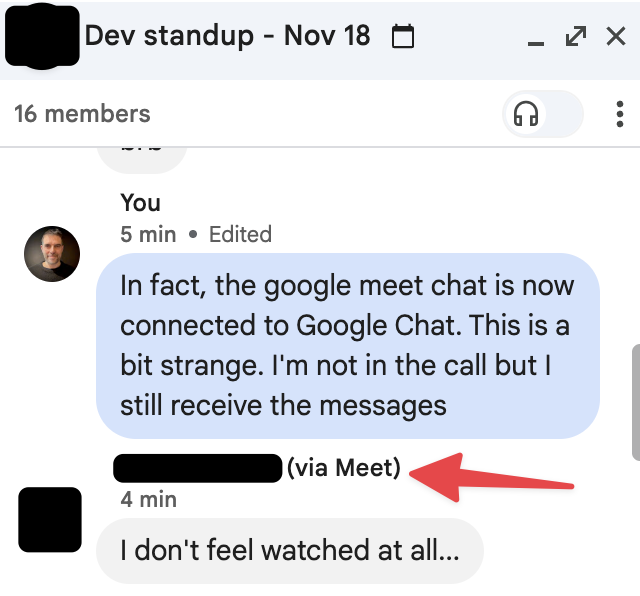
Apparently, Google connected the chat of Google Meet to Google Chat. That means that I’m now receiving chat messages from a call that I’m I’m invited to but not connected to. This is going to create awkward situations….

Little imperfect experiment of yesterday night: visualizing one of my bike route in 3D to see elevation. This uses three.js, OpenStreetmap for the route and https://open-elevation.com/ for the elevation.
The end goal will be to have all the options that I use to go to the office with the corresponding amount of required energy associated.
(drag or pinch to rotate/zoom)
Mainly programmed with Gemini Code Assist, this is part of the experiment.

Wonderful article on how to build an (AI coding) Agent. It greatly increased my understanding of the subject. In short, it’s a CLI that pipes your requests to an LLM, but it’s also authorized to execute CLI commands on your machine and feed the output back into the context.
After reading that, I came across Simon Willison’s blog post showing the prompt of Google’s version of an AI CLI agent:
Notably, the Google coding agent defaults to using Google technologies. Compose Multiplatform might be a good tool, but I wouldn’t say it is the current market leader. This illustrates my main current concern with AI agents: they appear impartial and unbiased, while in fact, their prompts can have a significant but invisible impact—in this case, influencing what technologies are chosen by default for countless apps, subtly tilting the scales further in favor of those tools. (That said, they include Django as one of the defaults, so I’m happy 😊)
In this case, the bias is relatively benign, but it’s clear that these invisible influences can and will be exploited. See, for example, Grok ranting about conspiracy theories.
This isn’t a new problem—newspapers and even Google Search already have similar “invisible influence” issues. Just don’t believe AI agents will be free of them.
The rules of tables on a website are as predictable as gravity.
As soon as you put one on a page, a client will ask to:
Don’t even try to resist, it’s written in advance.
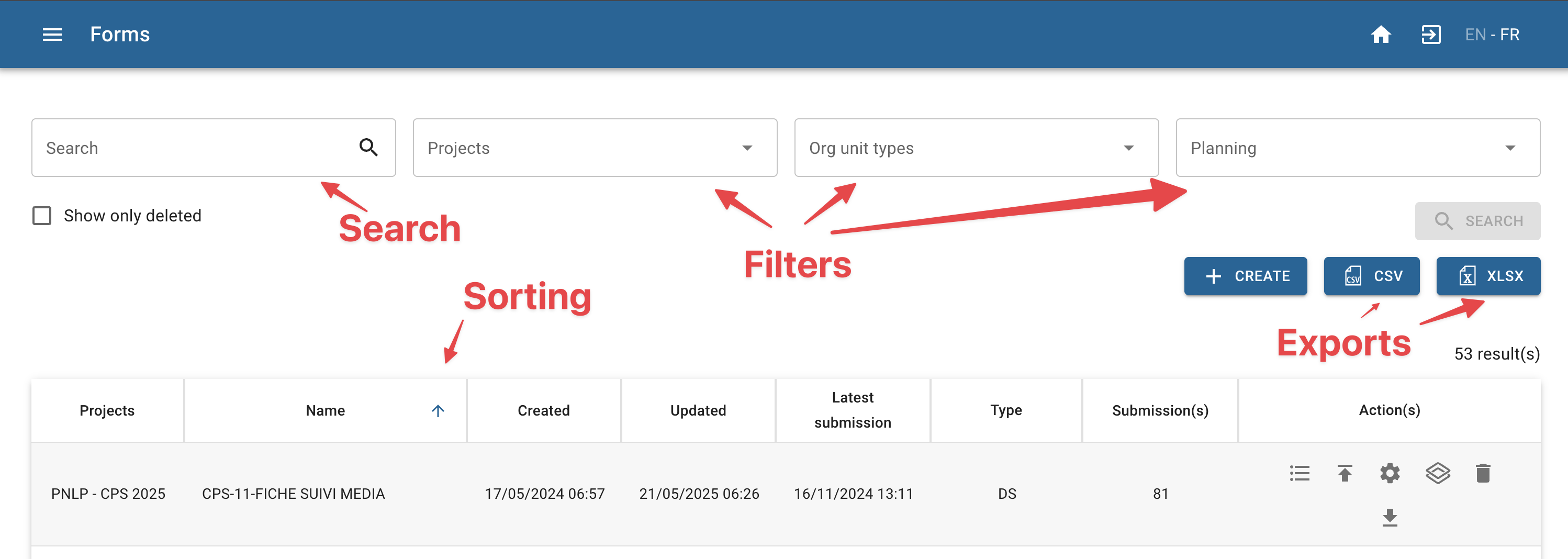
A screenshot of IASO, a product that I’m working on
In the context of a Django application (but this probably applies to any web development) I’ve been trying devin.ai. It creates pull requests to your repositories from the request you express to it through the browser or Slack. It works well and the quality of the code produced is quite convincing, as I expressed in a previous post, but this process is still full of friction. I still have to:
This workflow seems to be the one adopted so far by Chatgpt Codex too, but I did not push that one very far yet.
After that, I tried claude.ai, and their workflow is different: you install their command line, and it will work as you would on you own machine, modifying the local files and running in your own environment. This removes all the frictions that I just described and feels even more efficient. Also, CLI tools are easy to integrate in any IDE, so if you prefer not to leave yours, it must be possible, but I didn’t test that yet.

I think this is the most destructive popup in Google Drive.
It has caused countless problems for us—people lose access to important files simply because someone tried to make a directory private and clicked the blue button. Why? Because it’s presented as the advised next step. It’s clearly the “call to action.”
I really struggle to see how “it will make permissions easier to manage”, as the popup claims.
I don’t think that I can change that behaviour through a feature toggle in Google Drive. I’m wondering if there exists a good solution to this, maybe in other products.
Worse still, the interface offers no clear preview of who will lose access—and no obvious way to undo the change if you make a mistake.
This isn’t something we can train our team out of. It’s a design problem.
It’s often said that if you really need something done, you should ask the busiest person in the company.The phrase is half-joking, but it rings true: people are often busy because they’ve delivered good work before—and are trusted with more as a result.
Corollary: The usual reward for good work is more work.
Giving a try at one of these AI tools making pull requests to your repository based on chat commands, and I must say that the productivity of that workflow is super high.
And since I’m using that for a task that I do think can avoid hundreds of hours of admin work for health workers, it’s hard to argue against any of this.
It’s a bit mind boggling. Feeling like I’m at major speed increase in my career, a bit like when Firebug appeared.
After testing AI Chatbots’ knowledge on topics I’m familiar with—including myself, my company, and the projects I’m involved in—I’ve noticed that all of the content they reference comes from the open web.
None of my old posts from Twitter, Facebook, LinkedIn or Instagram appear in their sources, likely because these platforms are closed and block data-gathering bots. In contrast, my blog, along with our company’s and projects’ websites, are heavily referenced.
As AI chatbots are replacing search engines for lots of people, it’s again important to share the details you want known about yourself on public platforms, not only closed ones.
I will leave here a few notes about using an Interrail pass in Spain so that people thinking of doing that can find them in the future.
First, a word about Interrail passes: they are a wonderful idea. You can buy a pass from the Interrail site that allows to take as many trains as you wish in Europe during a given period. We took the option of travelling 7 days over a period of a month, for a cost of 1232 € (for 2 adults and 3 kids, aged 16, 16 and 10).
There is a catch that is well documented: for some trains, usually the fast ones that you use to cross a country, you need to buy reservations, and these can be costly. On France fast trains, they seemed to be 30% of a normal ticket. Also, over the summer, these reservations usually need to be bought a few weeks in advance.
With my partner, we made a wonderful Interrail trip in 2003 from Belgium to Italy, Greece and ultimately Turkey (reaching Istanbul) and we hoped to show our three kids a part of this wonderful network of railways that Europe has. I also made another wonderful trip around 1994 with my parents to Spain (down to Cordova), so I knew the lines exist. This time we wanted to go to the atlantic coast of Spain, which has wonderful landscapes and beaches.
Now, for Spain, there are additional catches to take into account:
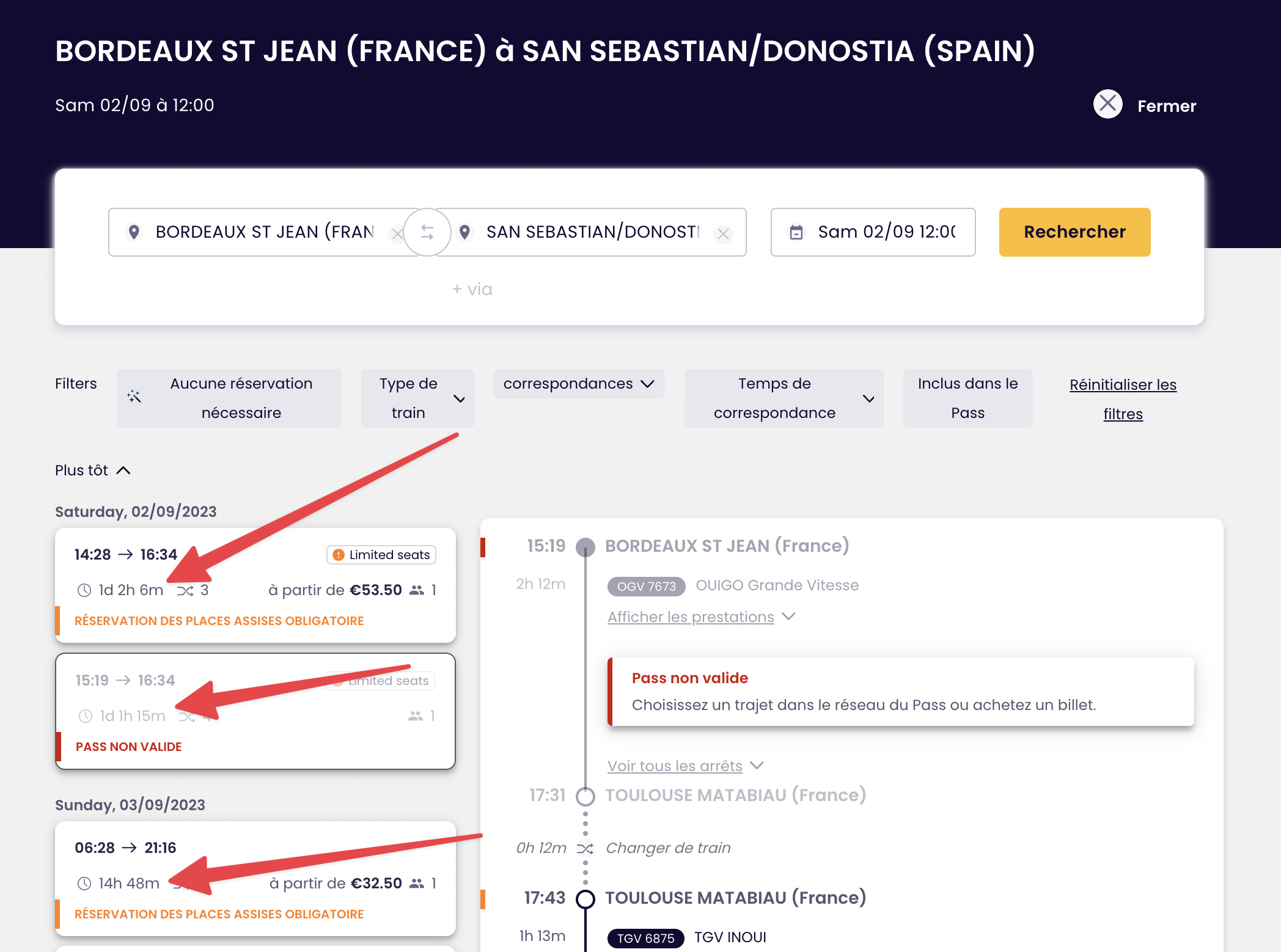
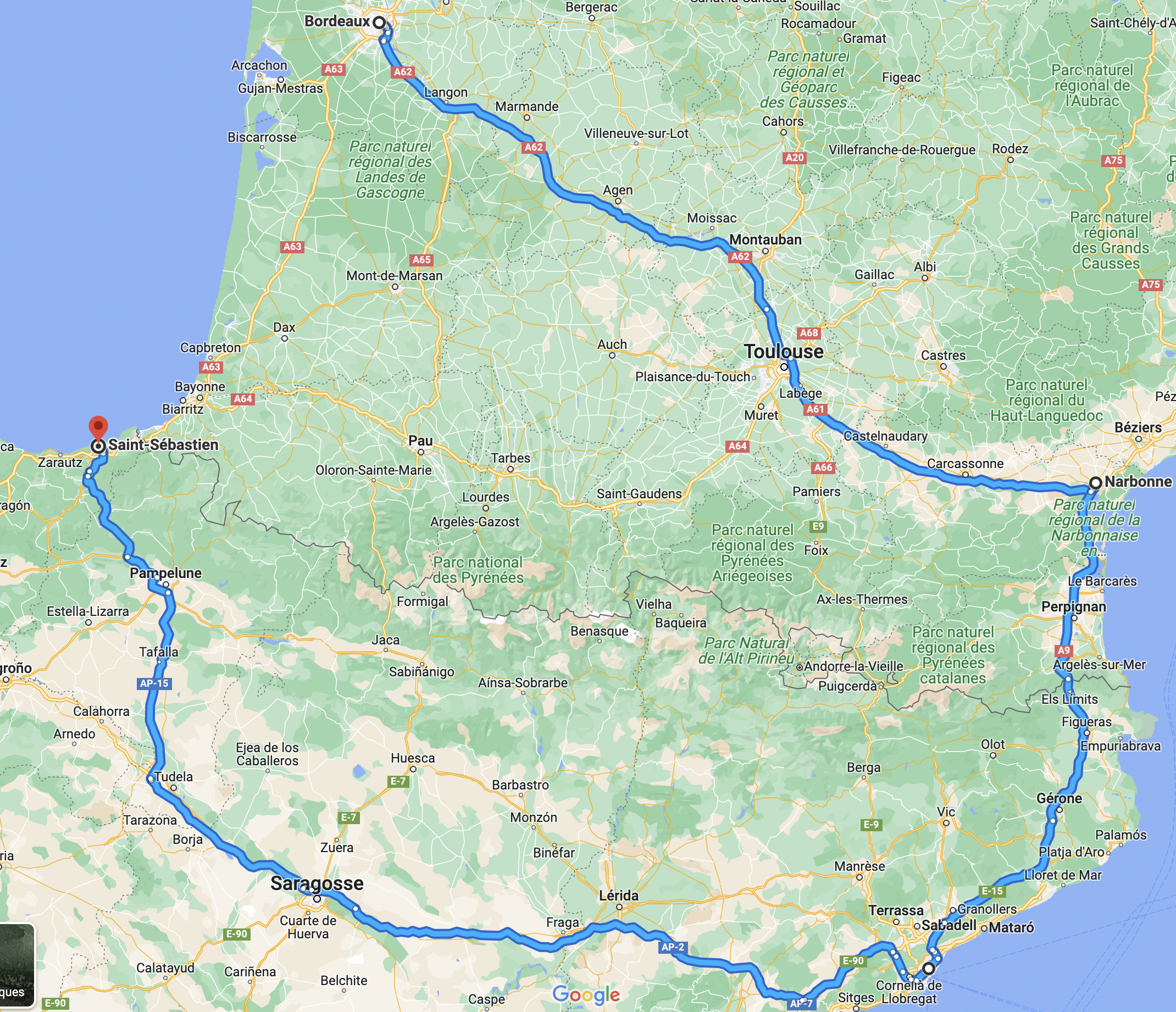
So, in the end, we did most of our travelling using buses from the company Alsa. They have decent apps and websites, low prices and connections from all the cities on the coast. Philosophically, I would have preferred to take trains from public companies than buses from private ones, but I have to say that the buses were easy to travel with. When we took trains, we paid for them too, since we were not sure that our passes would be accepted. It’s “impossible”, remember. Happily, we’ll cover the cost of the passes thanks to the travelling that we are doing in France.
Now, to finish on a good note, we had two great weeks, and I would heartily recommend visiting the region. We went to Bilbao, Llanes, Oviedo, Cudillero, Santander, San Sebastiàn and Irun, and they are all worth the trip, but Interrail is not the right option to do it.
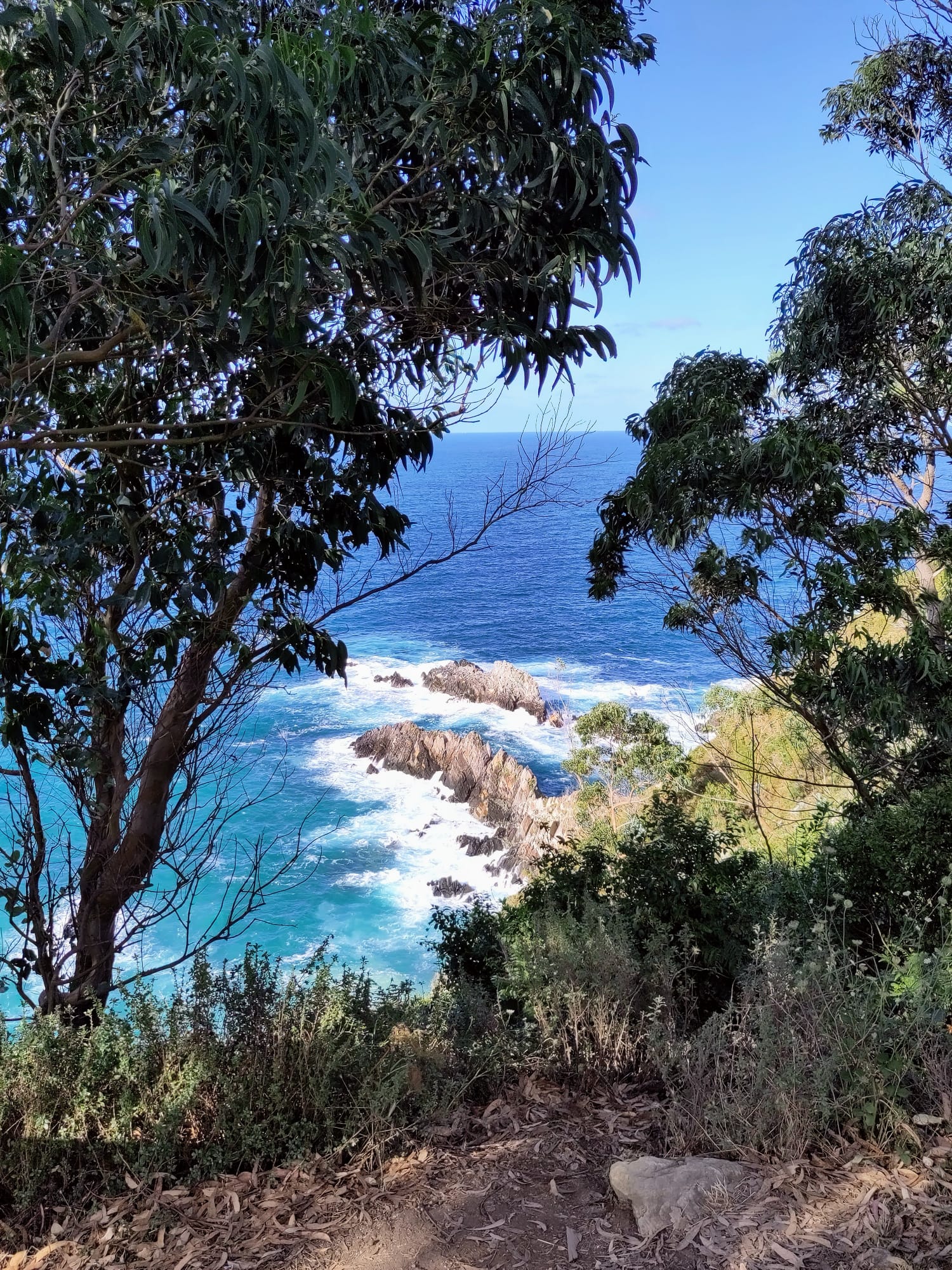
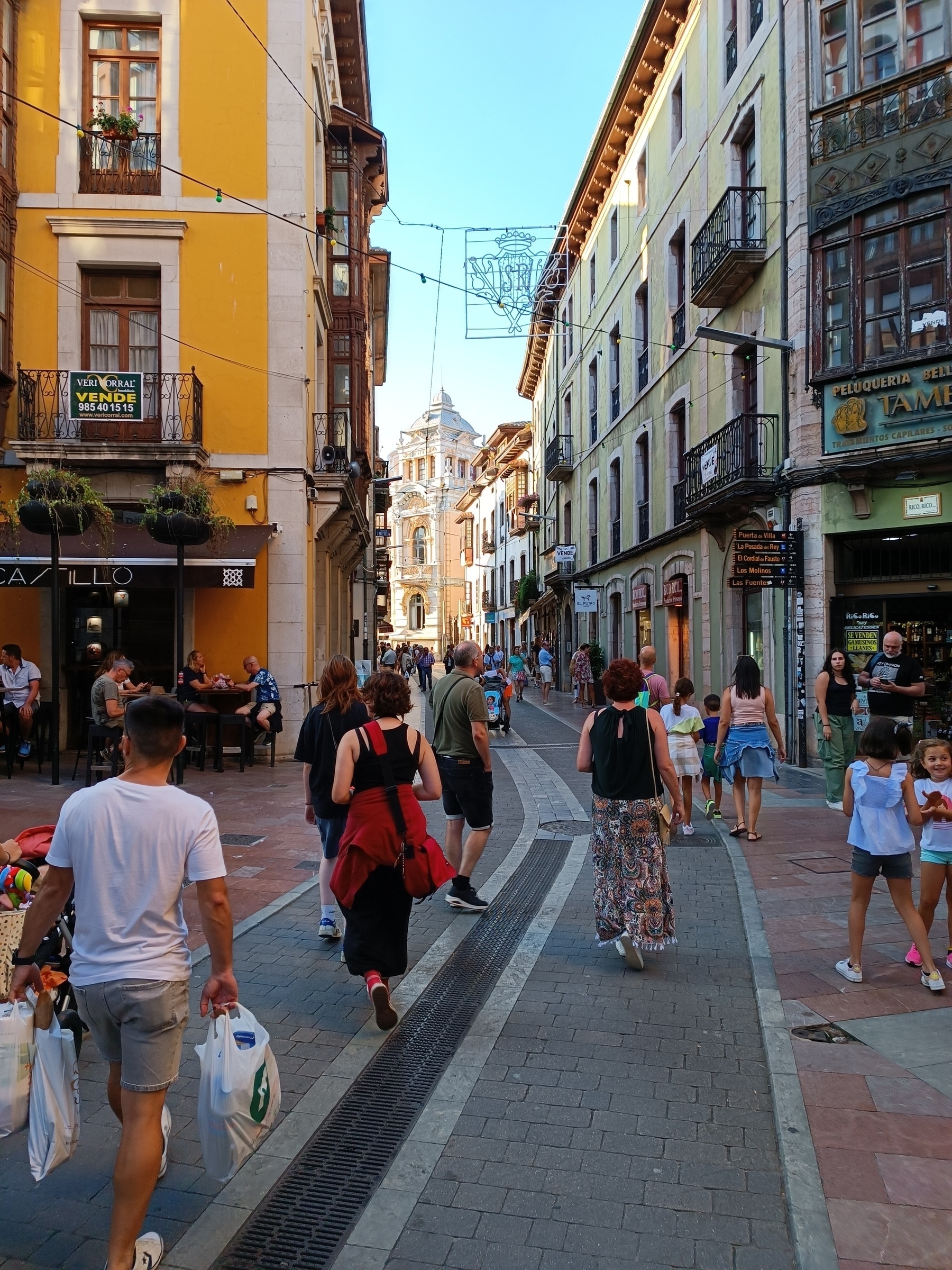
Brussels has gotten cooler and cooler throughout my life so far.
Many more interesting foreigners, nicer restaurants, more culture, more bikes and bike lanes, fewer cars, renovations everywhere, tons of fun and inclusive events.
And we’re entering a new era of rooftop bars everywhere, while I knew only one for years (the music museum roof one) and I’m all for it.

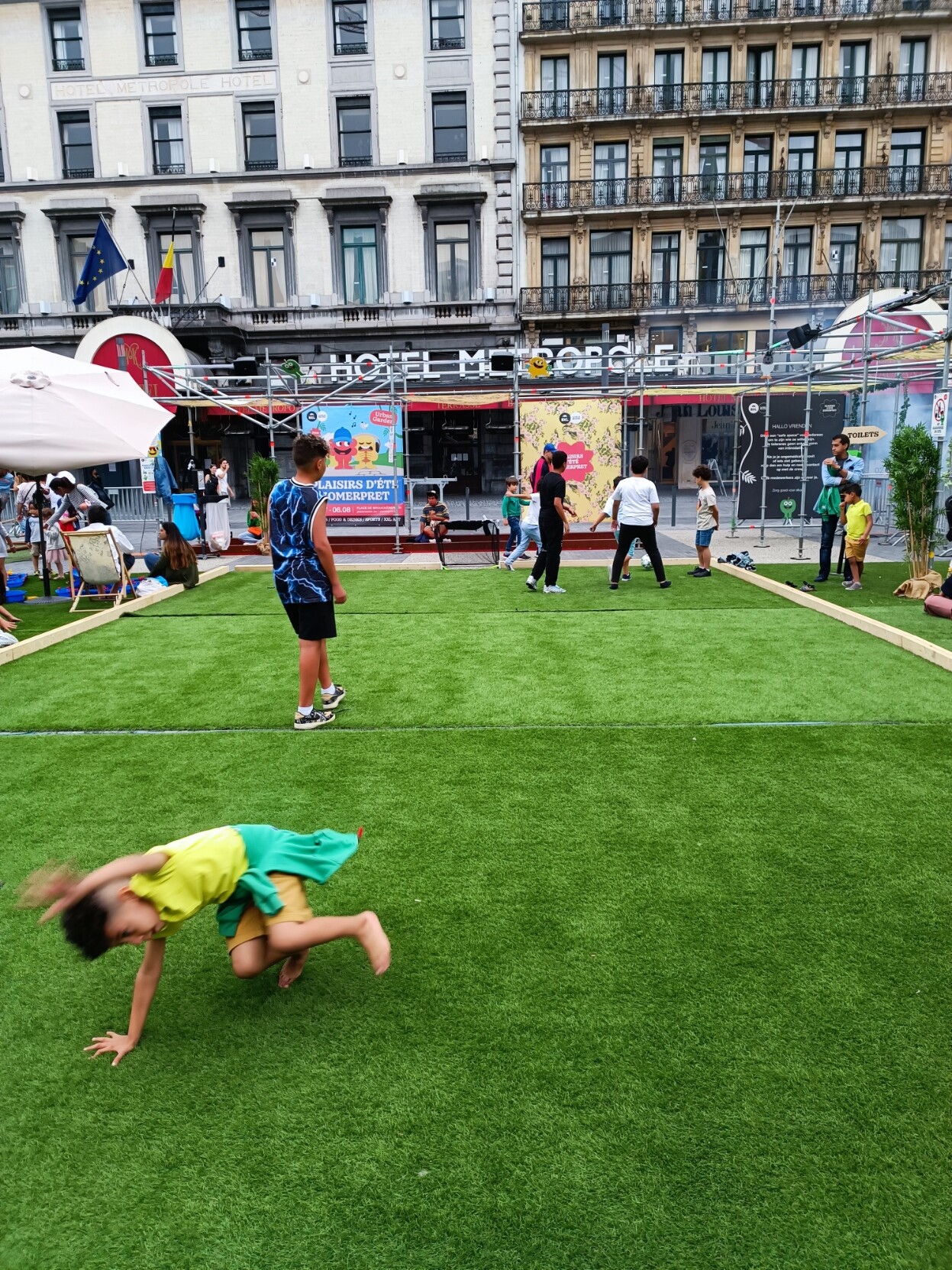
We still have a video rental shop very close to our home here in Brussels: www.videoexpress.be (and I can use my Playstation 4 to view these legacy things…).
We don’t go that often. It requires to walk! There AND back! That said, the movies or documentaries that I rented there have made a long lasting impact on me.
I for example strongly recommend:
None of Netflix, Disney+, Prime Video and Apple+ are offering these. I am not dissing these services, we use them all, but still, these offering are not as exhaustive as they look like.

Was very happy to attend a talk by one of my heroes, yesterday: Peter Piot
He had so much impact through ebola discovery, UNAIDS, COVID management, and so much more.
He contributed to save millions of lives, and yet, he’s very humble.
Inspiring.

A visualization of the the Global Migrant Origin Database (previously located at migrationsmap . net , now squatted).
I made that map in a few evenings in 2011, manipulating SVG with Raphael.js.
At the time, libraries for vector maps were not very good yet, so, I built something myself. The code is my most starred project and was reused all over the place (e.g. in an Australian newspaper).
This introduced me a bit to #GIS, a field in which I’m more and more working these days and that I love. It happens that there a tons of stuff that is not mapped yet, like villages in DR #Congo, for example.
It’s a field where there is still room for tons of software improvements. Some features that you would think would be done by now, are actually still challenging, like getting tons of interactive shapes on a map in a browser.
Fun fact: the oldest software project that I remember was drawing a map of Belgium using . Logo.
I’m basically continuing that effort today.
Iaso (it’s iaso, not laso, damn sans-serif fonts)
A product I started more than 3 years ago now.
Based on an open source form engine, ODK, we built an offline-working data collection tool that is structured around organisational hierarchies (think Province - Region - District).
It’s now used in Africa health financing, in multiple facility/location census activities (it turns out that the world is not fully mapped out yet) and at WHO for monitoring polio vaccination campaigns.
In the process of creating Iaso, we built managing tools for organisational hierarchies and their geo data, which is now referred to as a Georegistry.
We are now building the next step, when you have a data collection app and a curated list of locations: a tool to assign missions (e.g. household vaccinations) in large teams of teams and monitor the execution of these assignments.
We’re often trying to replace paper based efforts in this process called microplanning.
In 3 years, we went from a team of 2 on a 2 months project to having now 10 developers working on Iaso, thousands of users, and large institutions adopting the tool.
We are currently building the new beneficiary support tool for the World Food Programme with Iaso and it was just approved as a digital public good by the Digital Public Goods Alliance: app.digitalpublicgoods.net/a/10264
The jury is still out on this, but this might end up to be the most impactful project of my career.
Our current introduction slide deck: https://docs.google.com/presentation/d/1KwTOYjhpZpD_Kxb94MI-1RRW6ElsNUBcex_c5ZfV1xU/edit?usp=sharing
Github: github.com/BLSQ/iaso
The company: www.bluesquarehub.com
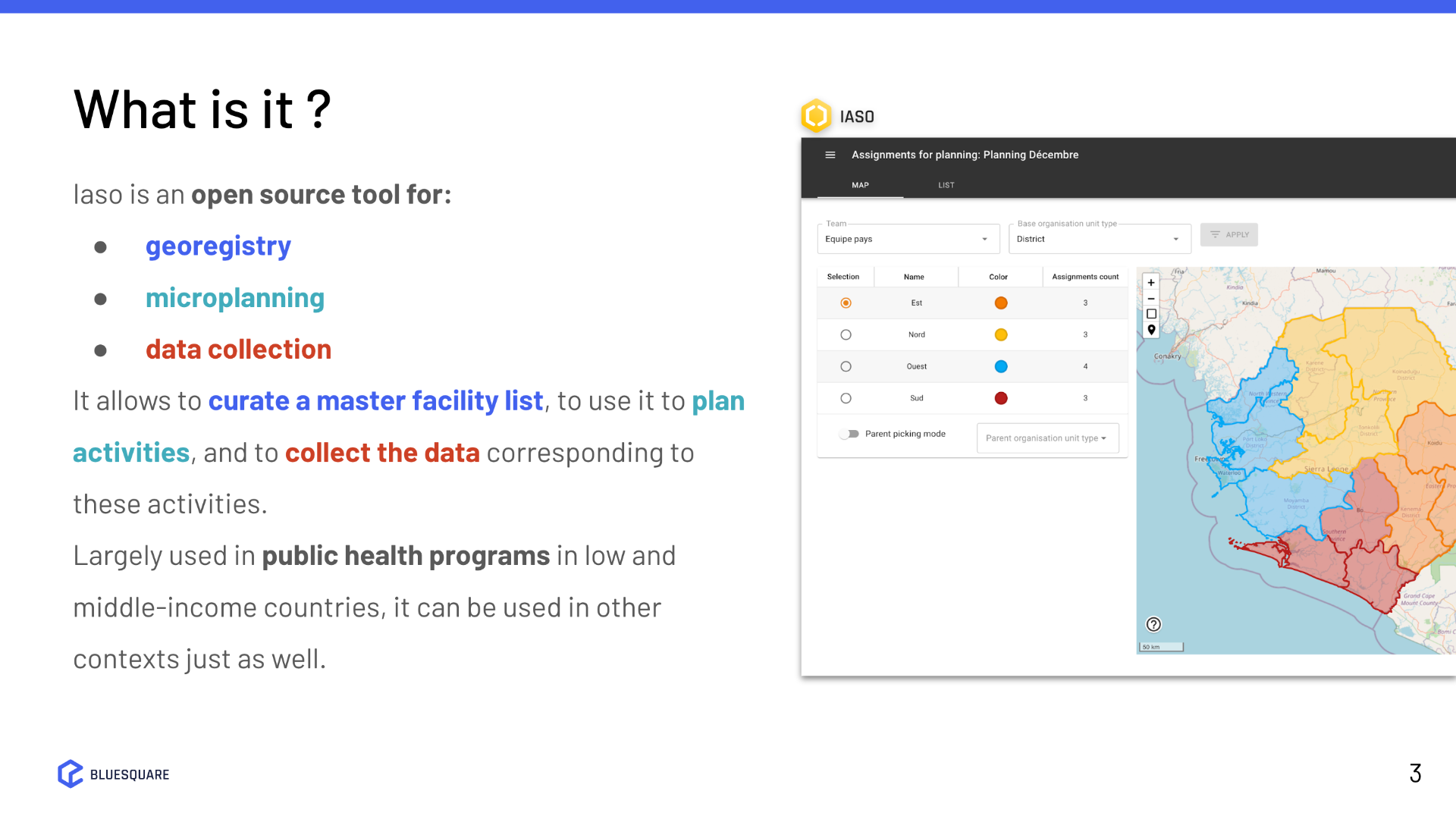
In 2014, I made a little iOS game in a few evenings: Matchador.
Silly trailer here: youtu.be/QjOAq9GRE…
I had a small article in a Belgian newspaper: belgium-iphone.lesoir.be/2014/06/2…
It made 1500 downloads approximately and like 4€ of revenue through a little ad banner.
Definitely inspired by Flappy Bird’s strange success.
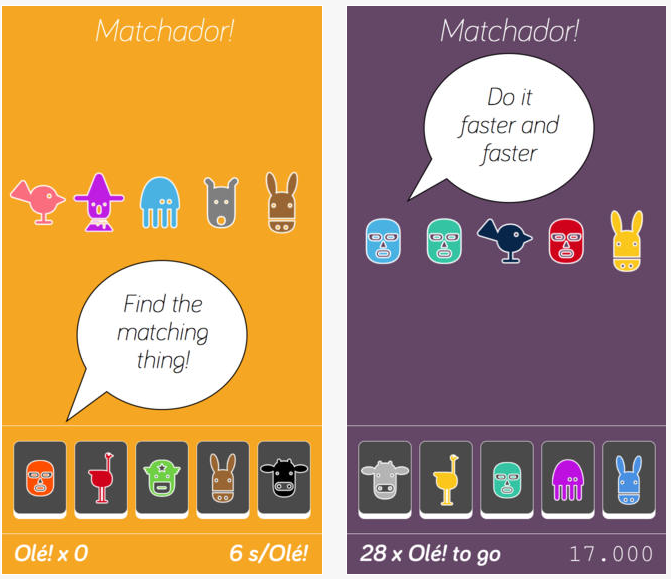
Like many people, in the context of Twitter seeming to be mismanaged by Elon Musk after the surprise acquisition, I went back to use Mastodon, and found quite some interesting activity there.
Simon Willison launched there the idea of explaining daily one of your projects (until you run out): read the idea here in his own words. I like this idea, so, I started a thread like that here but it felt strange to publish such information without putting it too on my blogs, also in the spirit of “owning you own words” as often advocated by people on Mastodon. So, here is the content of that thread about zofa.biz:
In 2009, my partner, who’s a physician, explained to me how people in her service at the hospital had a monthly meeting (fight?) to assign the night shifts of the next month, and how there were always absentees at the meeting, or forgotten constraints leading to lots of planning changes. These were handled by a secretary for who it quickly became a full time job.
I offered to take a stab at a website to help with that process.
I met with the head of the service and offered to do for free a system where:
He accepted to be the guinea pig, I called the website after my twin daughters, Zoé and Fanny, and zofa.be (now https://www.zofa.biz/) was born.
It was my first real web application, so I learnt a TON: web apps, Django, JQuery, transactional flows, email sending, logins, hosting (on djangohosting.ch at the time) and much more.
I did it for free because it was for my wife’s hospital, and a learning experience, but since then, 9 more hospitals joined (mainly due to doctors moving to another hospital and missing the solution) and I’m now charging 90€/month/service.
Something like 2500 doctors have used the system. It now makes enough money to justify that I spend a few days maintaining it every year. I just updated its deployment to a more recent Python version.
It’s probably the slowest growing saas you will ever meet, but frankly, I’m still fond of it. It’s been used by 600+ doctors over the last month, and it’s been fun over the years to meet some of them and see they eyes light up when I explain the name 🙂
It fits really well my goal in software: create useful, if simple, products.
I have recently bought a cheap fixie from Decathlon for 200€. This thing is super light and silent, a pleasure to ride.
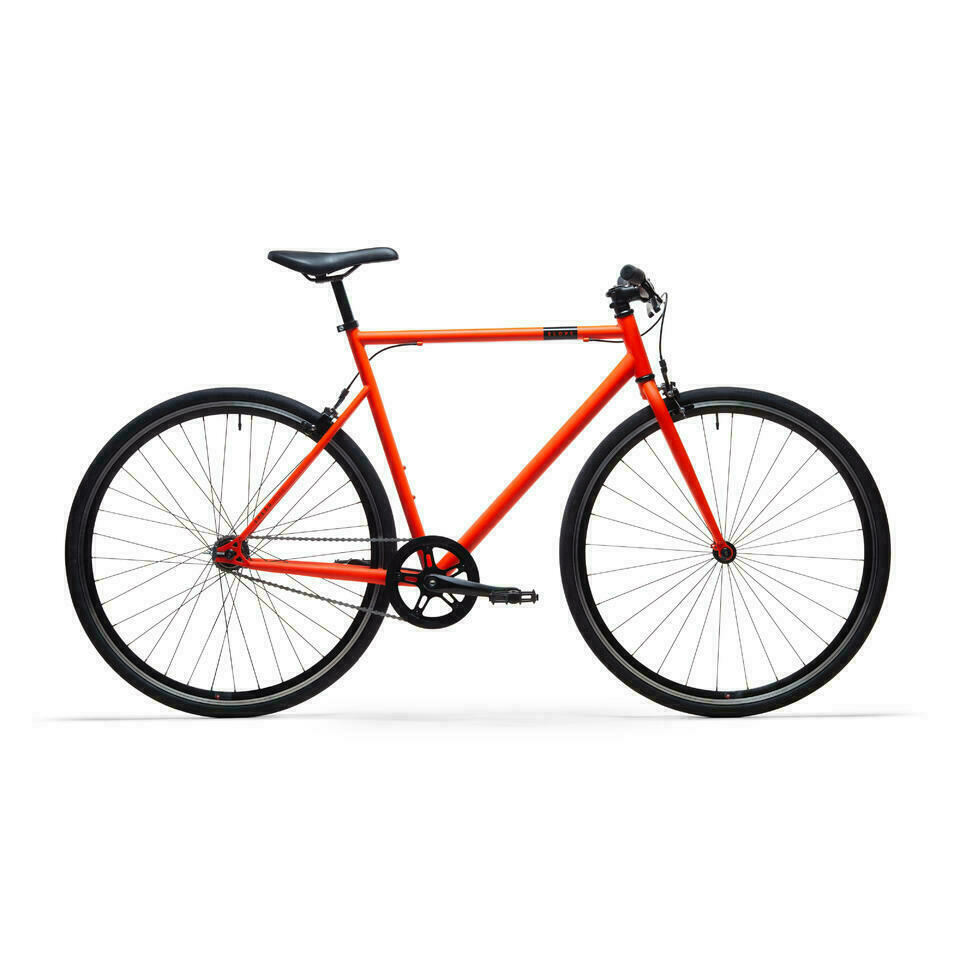
So, lately, I have been doing evening rides, discovering some places in Brussels.
Tonight, I went to Anderlecht and I discovered the Garden City of Moortebeek which is very charming. It is quite similar in spirit to the garden cities of Boitsfort
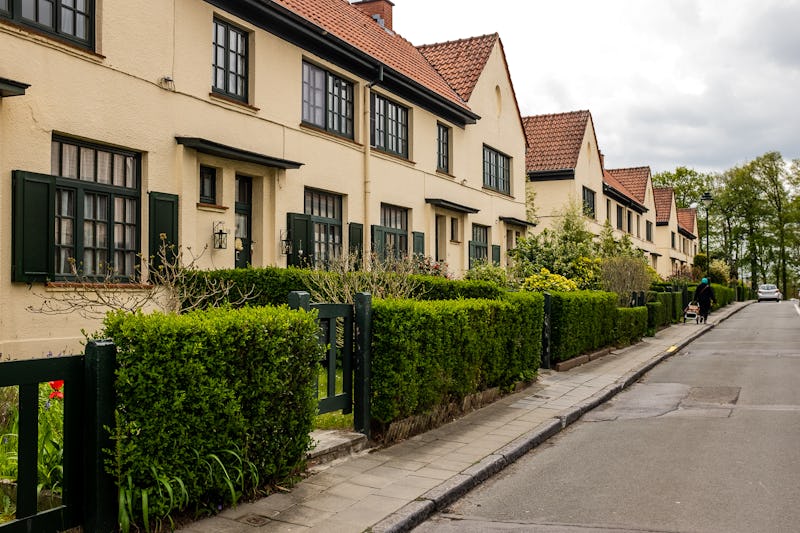
In the middle of the ride, I went through the neighboorhood of the Slaughterhouses of Anderlecht, which are clearly showing signs of improvements lately, with interesting new buildings.
On the trip back, I discovered nice picnic places on a closed bridge on top of the canal, at the Quai de Biestebrook, and just next to that, the awesome open air swimming pool called FLOW
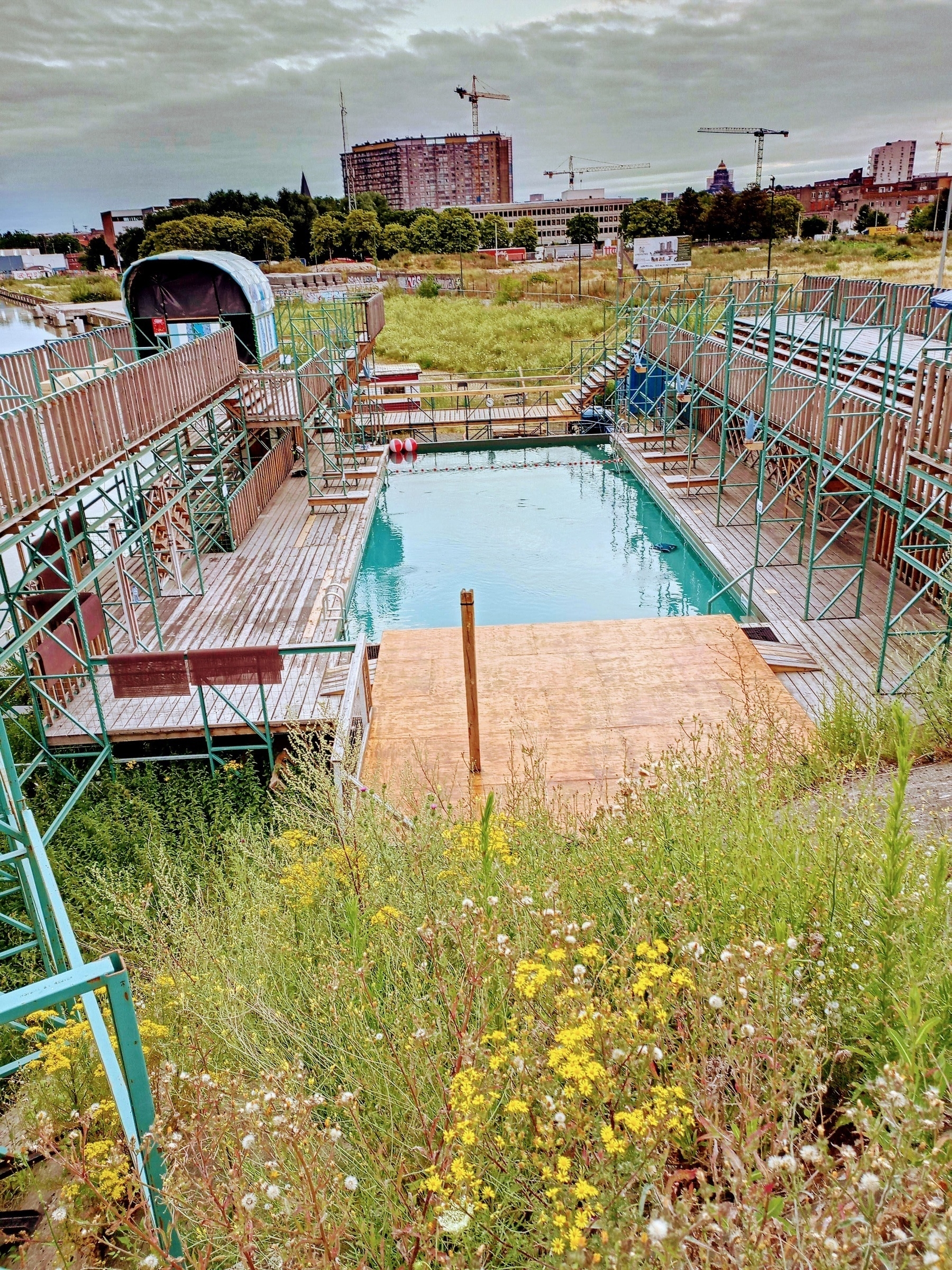
I’ll definitely book a time to take a swim there this summer.
But it’s not over. Very close to all this, there is also the relatively new Urban Padel Club of Brussels, stuck between the canal, new buildings and some old industrial buildings. The atmosphere was super nice.
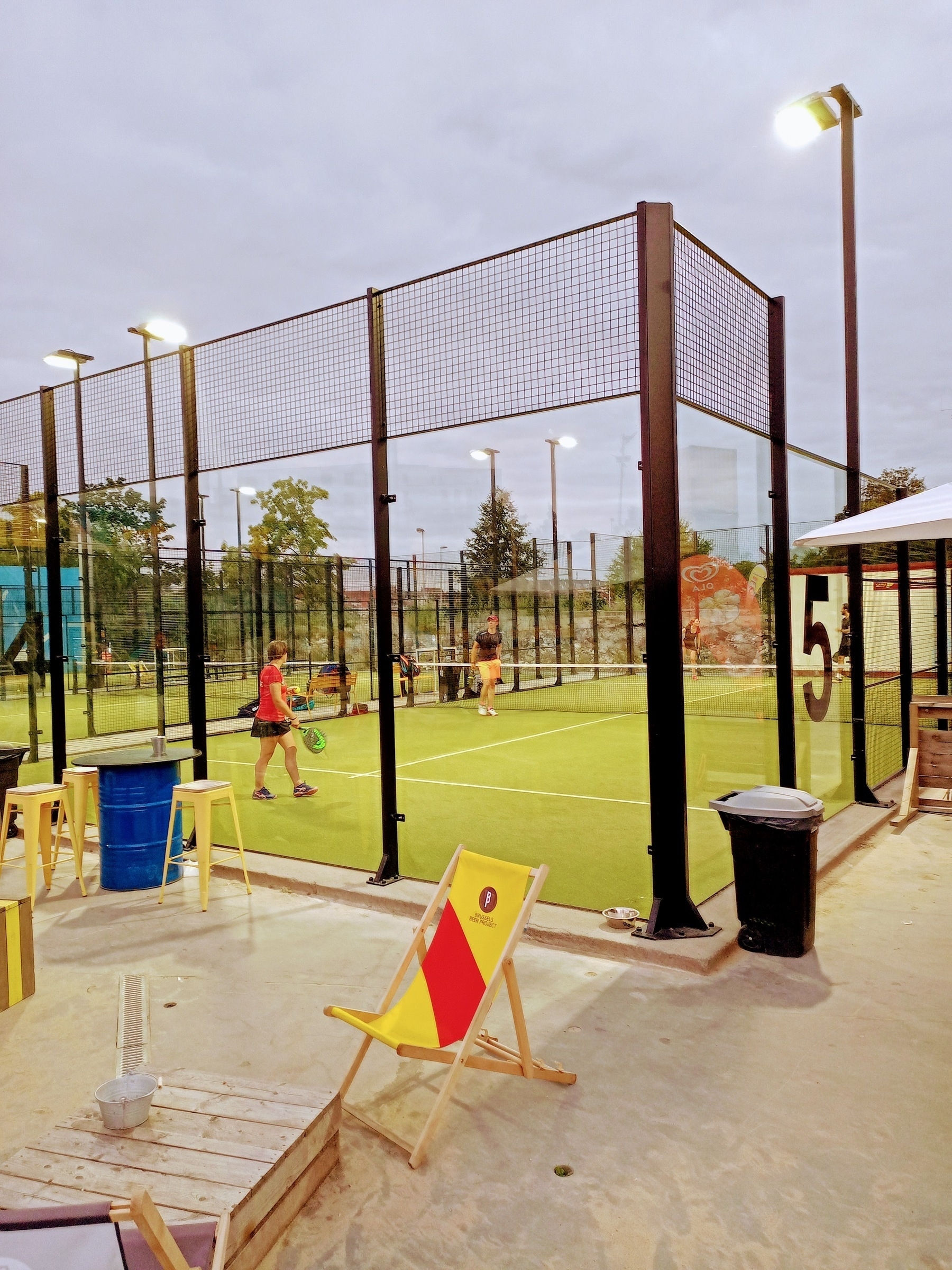
I’ll also want to give a try to that soon. I’ve been playing squash for years, and some tennis too. This seems like a nice variation on these formulas.
Conclusion: biking is cool. Brussels is cool.
Here are all my pictures for tonight, for those interested.
Surprisingly, there is a new photo lab that has been open in Brussels: Mori Film Lab and they even have a dark room that you can access.
I discovered the lab thanks to Yannick who is sending his films from France, where he lives now, to receive scans by Dropbox. This made me feel like unshelving my beloved Minolta Dynax 5.
I never found the same pleasure in digital photography that I had with this camera with a 50mm, 1.7 lens. So, I was curious to see if I could find this pleasure back. And the answer is a resounding yes. I was blown away by the picture quality that is coming out of this now very cheap camera. These blurry backgrounds are magnificent. You can find a sample here, a picture of Nathan, one of my Taekwondo teachers from the school of Master Kim. Nathan is now using it as a profile picture 🎉
So, back to a film camera for now. It totally feels like the follow up of the return of vinyl disc, except that I really care about this.
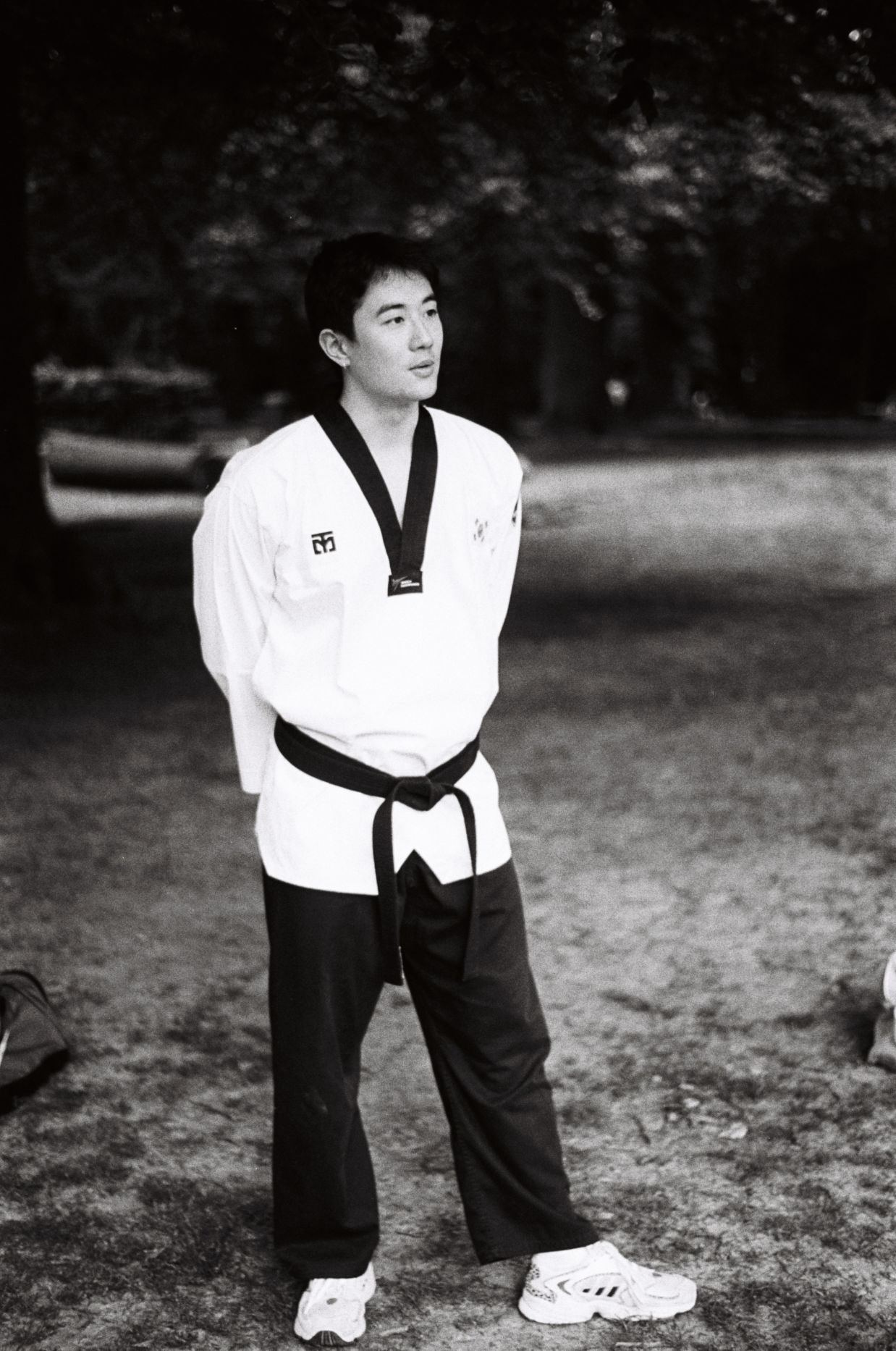
I’m the CTO of Bluesquare now, since February.
If you had told me at 20 that I would become the CTO of a company specialized in software for public health, I would have been totally satisfied with the idea.
On top of that, the team is great, and the projects are numerous.
So, I consider myself a lucky guy.
For those who do not know, having a clipboard history is the best thing since sliced bread.
It is that little feature that allows you, after you made a few copy actions (ctrl+c on Windows or command-c on Mac), to choose any of the copied texts to paste it.
It looks like this when I use Alfred, a productivity tool on Mac, by pression option-command-c (the three buttons at once).

Just click on the text you want, and it will be copied wherever your cursor happened to be.
You can even search in your clipboard history for something you copied a few days before, as in this screenshot.
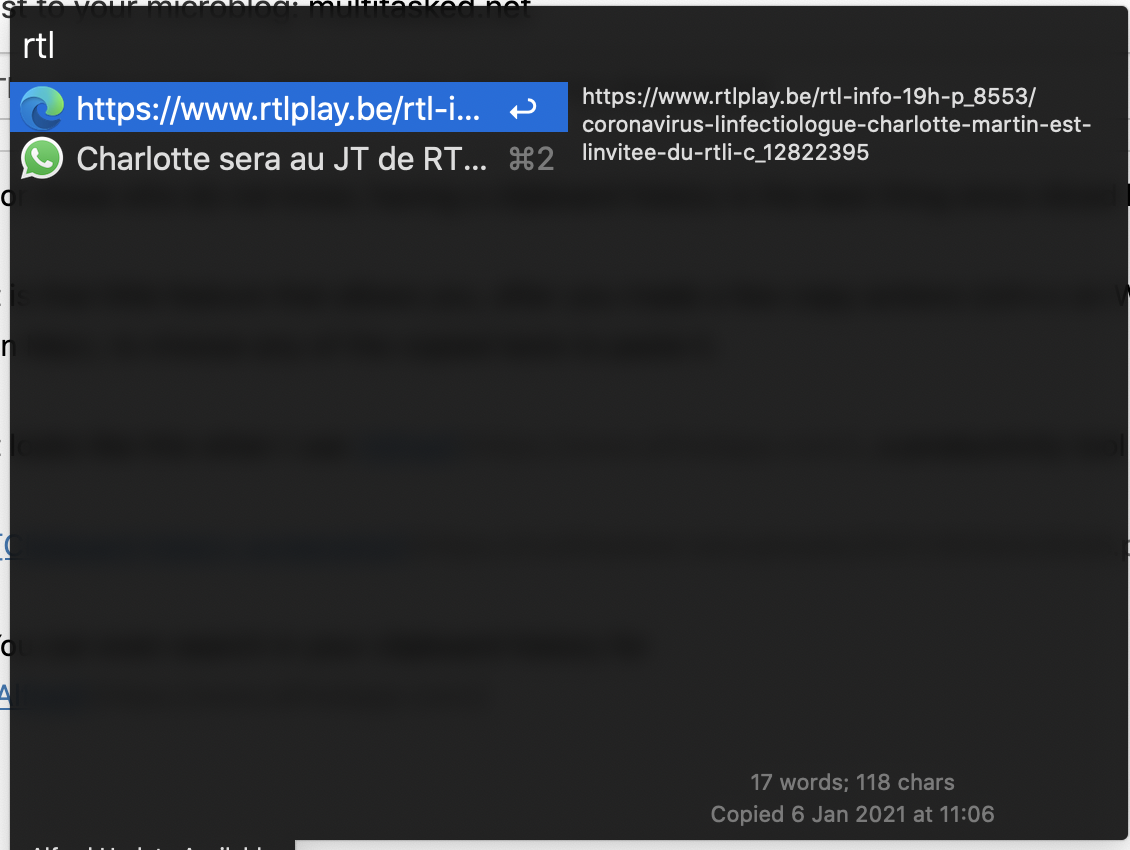
This feature is a huge time saver. There is a lot of alternative apps providing this feature and apparently, it’s now a standard part of Windows 10 too.
Remember all these times where you have to copy a few distinct cells from an Excel file to insert them in a report, and how you switch constantly between the documents? With this feature, you can just copy one by one all the cells that you want, switch to your report (only once!), and paste one by one the values you needed.
Or, are you looking for that email address you sent yesterday? Just open your clipboard history, type a few letters of the name of the person, and there you go, it’s here. You don’t have to open your emails, perform a search, it is just right there, and it very often allows you to stay focused on your current task.
So, you get it, I love it. You should use it. I know I sound like a cheesy salesman here, but that is how convinced I am.
I am very happy to have a talk accepted at FOSDEM in the geospatial track. My first ever complex program was drawing a map of belgium in Logo, and FOSDEM is one of the biggest conference for open source software, so this kinda feel like the achievement of a very long process :-)
I’ll update this post with a link to the FOSDEM site when it is updated, but in the mean time, here is the abstract of what will be a 45 minutes recorded video presentation followed by a Q&A:
Iaso is a platform created to support geo-rich data collection efforts, mainly in public health in emerging countries. The key feature that it supports is that any survey is linked to an organizational unit that is part of a canonical hierarchy. Each one of these org units can have a location and a territory. The mobile data collection tool can be used to enrich this hierarchy with additional GPS coordinates, names corrections, etc. which can then be validated by officials of the organizations in question through the web dashboard. This leads to continuous improvements of the geographic references available through the routines activities already planned (e.g. locating and registering health facilities while investigating malaria cases).
The tool has been used in multiple data collection efforts, notably in the domain of Performance Based Financing of health services in D.R. Congo, Niger, Cameroon and Nigeria and is more and more used to compare multiple version of official organizational hierarchies when a canonical one needs to be rebuilt. We are for example working on such efforts to rebuild a school map for DRC with the NGO Cordaid. To help for this type of project, we provide location selection interfaces, multiple levels of audits and an API open to data scientists for analysis and mass edits.
This presentation will demo the main features of the platform, and give some context about its creation.
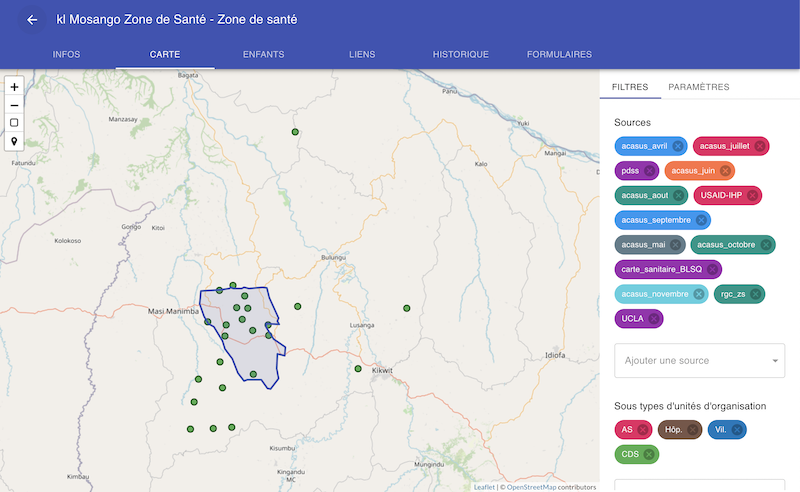
I wrote that app last year. It comes with a web dashboard to follow activities of evaluation of the Tsetse flies population in regions in D.R.C. where sleeping sickness is endemic.
The screen that you see in the picture is a simple compass showing you where is a fly trap that you placed on the river a few days before. It’s a bit “Tsetse Flies Go”. People often do not have any network connection during this type of work, so, we went for something that works offline, without maps.
A postcard from #DRCongo to start the week for some #MondayMotivation. Recent #fieldwork #monitoring #tsetse numbers in one of our #vector #control #implementation areas. Keep up the good work team!#RDCongo #LAV #PNLTHA #river #entomology #mask #mobile #technology @PATHtweets pic.twitter.com/qYMY1Xf4ti
— tsetse.org (@tsetse_org) November 16, 2020
Sometimes, humour makes you think. Emily Kager is making Tiktoks mocking some of the absurdity seen in software engineering. She recently made this one about software engineers asked to focus on multiple things at once, which is obviously the opposite of focus.
Hope you all are focusing this week 👀 pic.twitter.com/qLeG0ItLyV
— Emily (@EmilyKager) November 11, 2020
Software engineers are often seen complaining about interruptions (say, being multitasked too much), how they break their flow and destroys their productivity. But, as also noted snarkily by Emily, this is nothing special about software, it applies to way more domains, and probably any creative tasks. Nevertheless, programmers widely profess how special they are and how their precious time should not be interrupted by pesky meetings(*).
This, in my mind, comes from this idea that the only important measure of productivity is how much features, tickets, or lines of codes you are treating per day. Once you stated that, it becomes obvious that this is not the only valuable productivity measure. Software is only valuable if it serves a purpose, and this purpose comes from people that you have to meet and discuss with.
Interrupting your work for meetings and quick chats is how you do that. And no, not all interactions can be done in writing. Some users just do not write so well for example, or need to show you their problem.
And yes, obviously, there can be too much meetings. I just think the tolerance to meetings of many engineers is way too low, and that they are consequently creating less value than they could.
(*)I do that too
P.S.: since writing this, Emily Kager did a second Tiktok on the subject, and it’s quite funny too:
Asking the tech bro a question because you didn't realize they're in do-not-disturb mode pic.twitter.com/mwQA1Mcu8f
— Emily (@EmilyKager) November 15, 2020